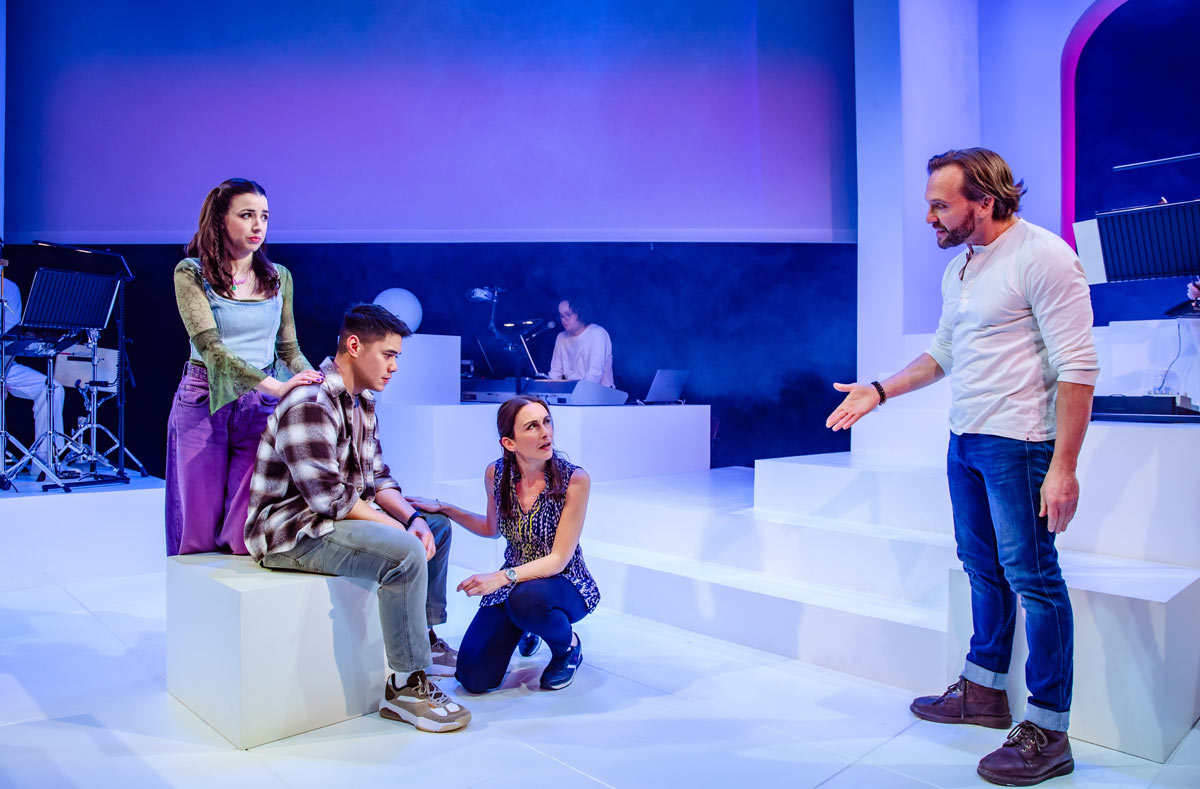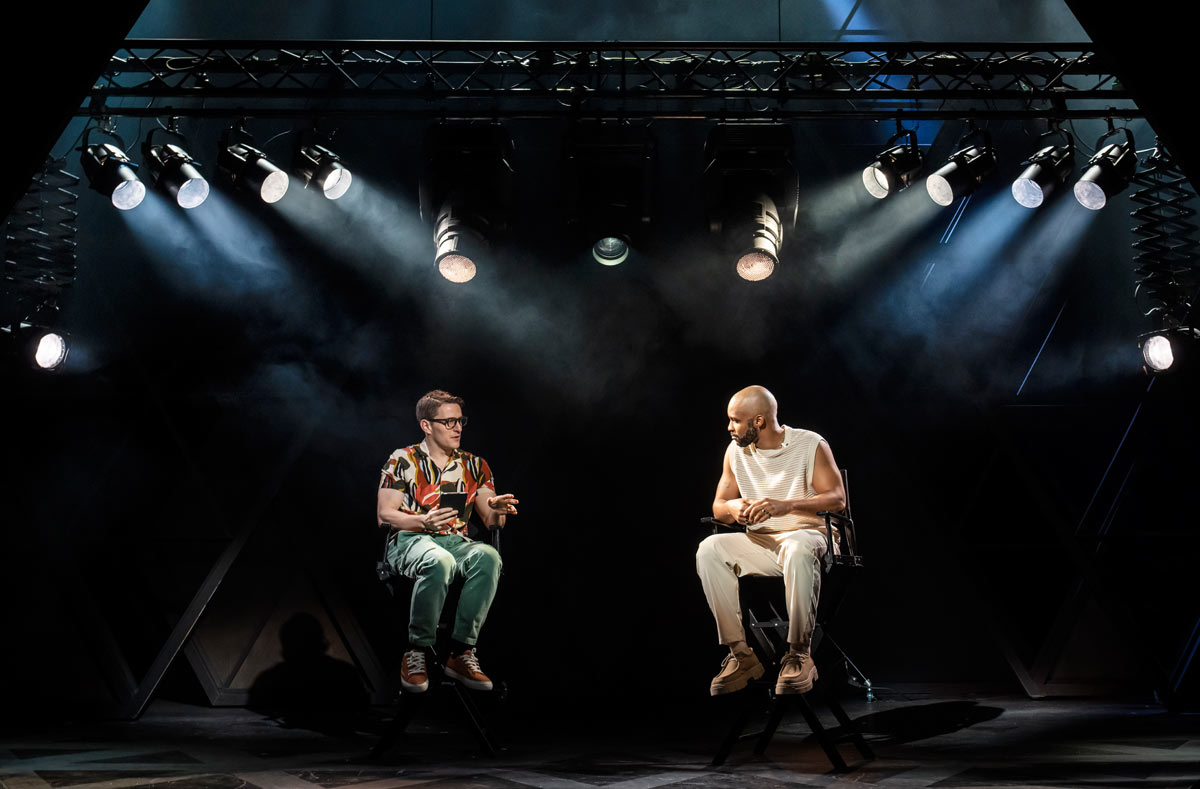The one potential exception in the song list may be All the Dead Poets sung by Heather (Molly Lynch) whose pure tone — almost reminiscent of a young Cilla Black had she been cast in Brigadoon — possesses the clarity required to cut through the schmaltzy sentiment. The remaining tunes are too busily occupied in introspective navel gazing to acknowledge the irony of one hitherto largely unused and seemingly catatonic character who suffers an existential crisis mid-way through the second half! The bizarreness of his sudden outpouring of juvenile angst was not lost on the audience however.
The overarching premise of the show seems to be a loose exploration of science versus faith cobbled around a woolly and largely unbelievable romantic story. A science writer Maggie (Madalena Alberto) who tires of criticism and having to answer tediously foolish questions posed by televangelist interviewers in the USA, agrees to join her former sister-in-law on an escape visit to Livorno, Italy. On arrival (and over an exchange of her smiles for his cabbages and aubergine - literally!) she falls for Luke (Tim Rogers) a tousle-haired, big-chested guy who we soon discovered has an unwavering belief in The Almighty, yet also possesses a distinctly unchristian distaste for a certain American scientist author. Of course, having never read her book nor seen the dust jacket with her picture emblazoned on the back, he doesn’t realise he is wooing the one woman in the entire world he apparently despises. I told you it was an unbelievable and woolly premise! In a book shop, the truth is revealed and kicks-off some fairly dull exchanges and the aforementioned navel gazing.
The notion that a cloudy-headed dreamer who earnestly insists on having a genuine reason to feel spiritual but when push comes to shove declines to reveal it (save a vague mention of Hackney!) could appeal to a renowned scientist who is capable of electrifying intelligent beings with her chemical deconstruction of emotions, is so ludicrously implausible that it seems almost insulting to ask intelligent reviewers to waste their time. And yet, there may be some (of the more starry-eyed/cloudy-headed variety) who’ll lap it up — and therein lies the neatest summation of the play’s conundrum: What constitutes faith? How does it differ from belief and opinion? And how can it compare with knowledge, facts and experience?
Give them their due, the performers certainly tried gamely to raise-up the material, (as did the three fully focused on-stage musicians), but the truth is that this kitty is in desperate need of a visit to the vets (or a mystic - depending on your viewpoint) if it is to have life beyond Riverside Studios.

 Molly Lynch, Joaquin Pedro Valdes, Kluane Saunders, and Tim Rogers in Killing the Cat. Photo Danny Kaan.
Molly Lynch, Joaquin Pedro Valdes, Kluane Saunders, and Tim Rogers in Killing the Cat. Photo Danny Kaan.

